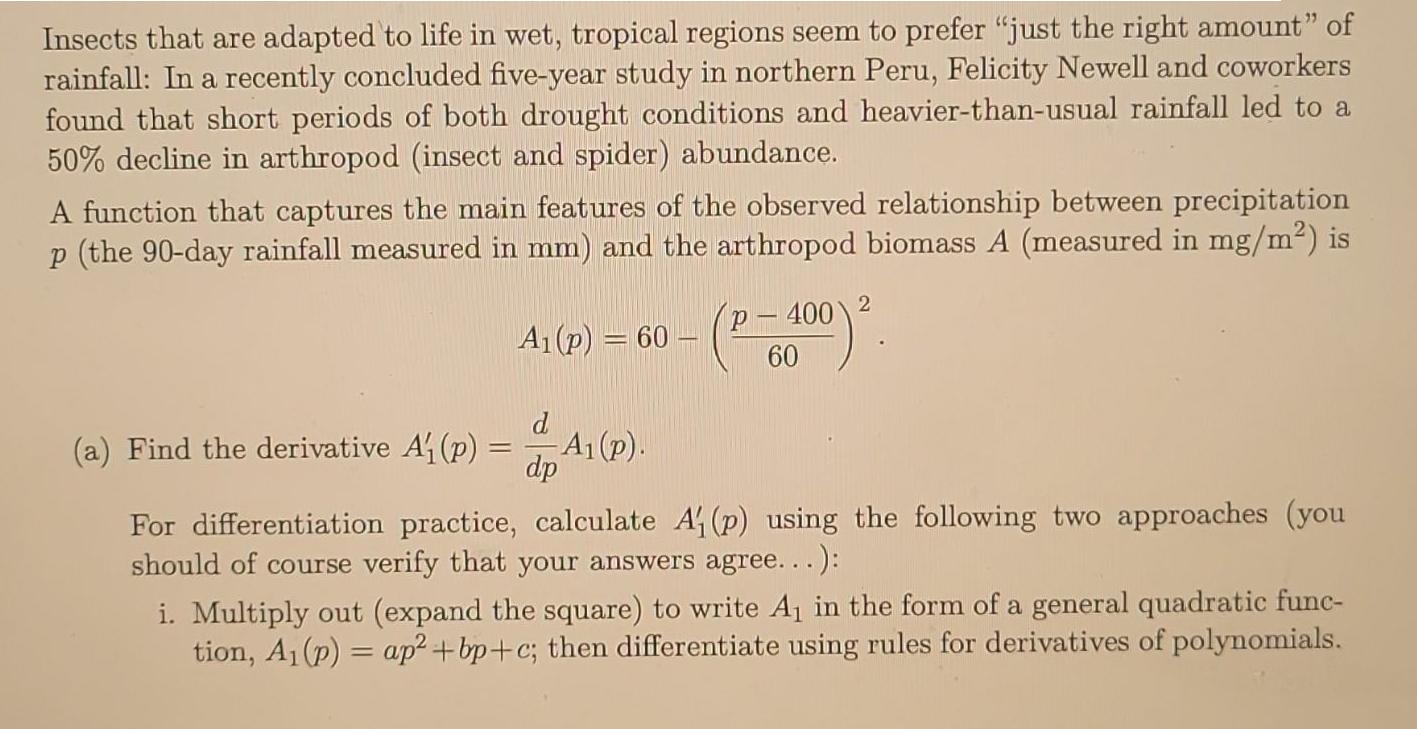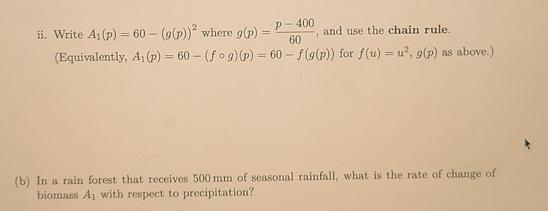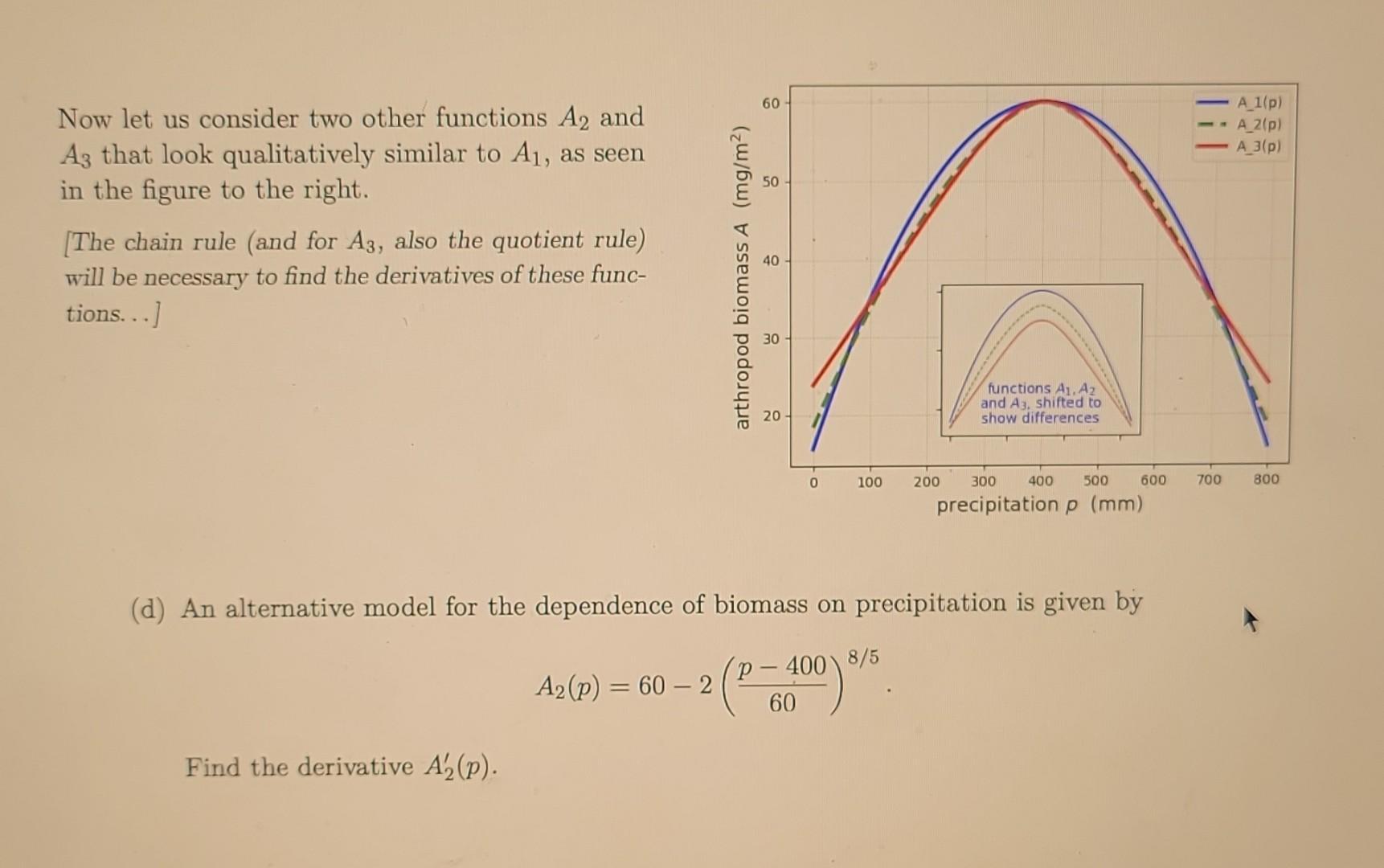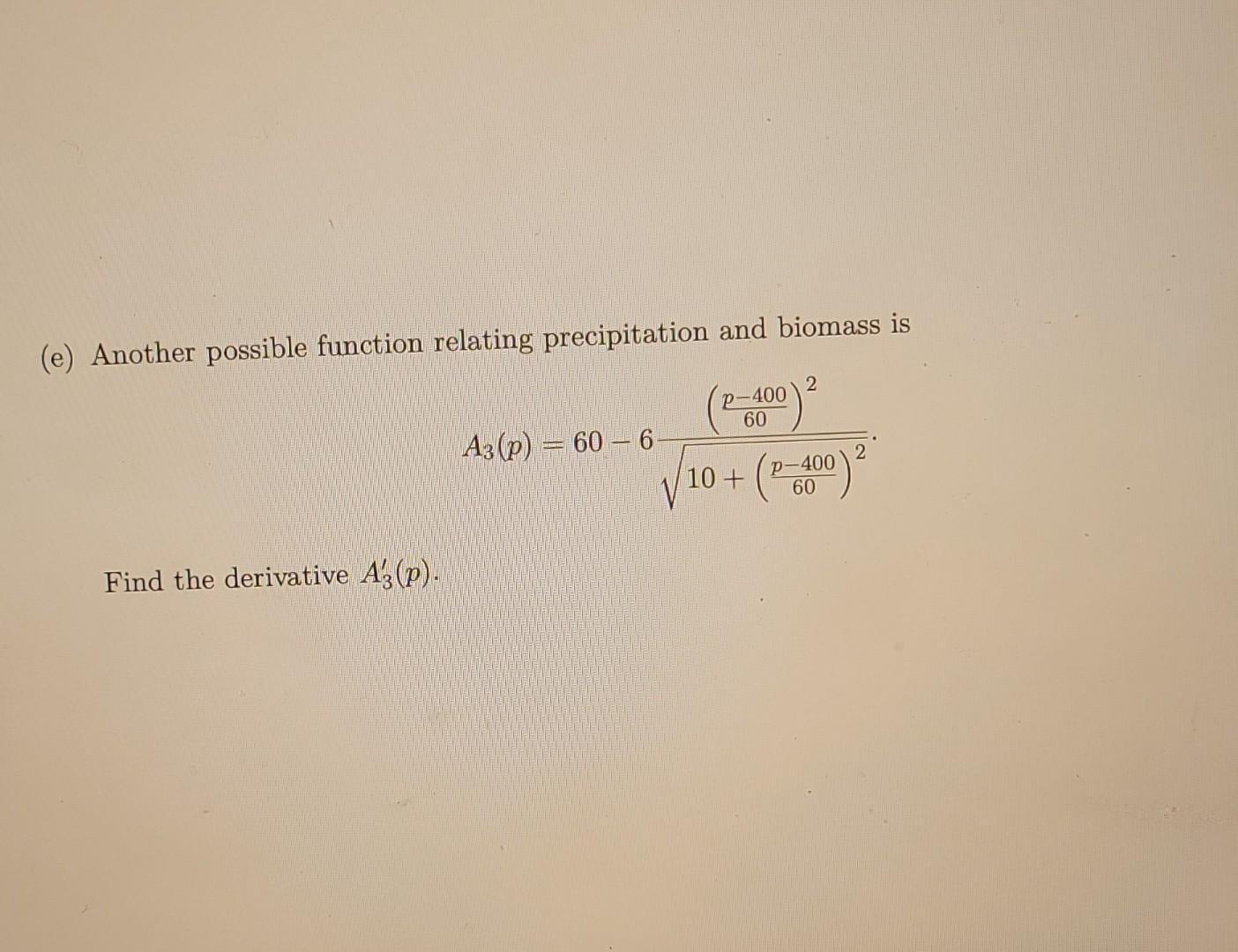Answered step by step
Verified Expert Solution
Question
1 Approved Answer
Insects that are adapted to life in wet, tropical regions seem to prefer just the right amount of rainfall: In a recently concluded five-year





Insects that are adapted to life in wet, tropical regions seem to prefer "just the right amount" of rainfall: In a recently concluded five-year study in northern Peru, Felicity Newell and coworkers found that short periods of both drought conditions and heavier-than-usual rainfall led to a 50% decline in arthropod (insect and spider) abundance. A function that captures the main features of the observed relationship between precipitation p (the 90-day rainfall measured in mm) and the arthropod biomass A (measured in mg/m) is (a) Find the derivative A (p) = A1 (p) = 60 - -A (p). dp 2 (P-100) . 60 For differentiation practice, calculate A (p) using the following two approaches (you should of course verify that your answers agree...): i. Multiply out (expand the square) to write A in the form of a general quadratic func- tion, A (p) = ap+bp+c; then differentiate using rules for derivatives of polynomials. ii. Write A1 (p) = 60 - (g(p)) where g(p) = P-400 and use the chain rule. 3 60 (Equivalently, A (p) = 60 (fog) (p) = 60-f(g(p)) for f(u) = u, g(p) as above.) (b) In a rain forest that receives 500 mm of seasonal rainfall, what is the rate of change of biomass A with respect to precipitation? (c) When (for which interval(s) of p values) does increasing precipitation increase biomass A (p)? When does it decrease biomass? Now let us consider two other functions A2 and A3 that look qualitatively similar to A, as seen in the figure to the right. [The chain rule (and for A3, also the quotient rule) will be necessary to find the derivatives of these func- tions...] Find the derivative A (p). g/m) A2 (p) = 60 - 2 arthropod biomass A 60 20 0 100 functions A1, A2 and A3, shifted to show differences 200 300 400 500 precipitation p (mm) 600 (d) An alternative model for the dependence of biomass on precipitation is given by P-4008/5 60 700 A_1(p) A_2(p) A_3(p) 800 (e) Another possible function relating precipitation and biomass is Find the derivative A3 (p). A3 (p) = 60-6- P-400 60 2 2 10+ (2,00) P-400 60
Step by Step Solution
★★★★★
3.46 Rating (166 Votes )
There are 3 Steps involved in it
Step: 1

Get Instant Access to Expert-Tailored Solutions
See step-by-step solutions with expert insights and AI powered tools for academic success
Step: 2

Step: 3

Ace Your Homework with AI
Get the answers you need in no time with our AI-driven, step-by-step assistance
Get Started


